Introduction
Rational Religion recently received a message from someone I’ll call ‘Sara.’ Sara used to be a Sunni Muslim. When her Muslim husband started to incline towards atheism, she began to explore scientific issues in order to find evidence for God. She also focused on her own relationship with God, and in her words, found ‘solace in Ahmadiyyat’. She formally entered the Ahmadiyya Muslim community three years ago.
However, the debates with her husband continued. She focused on the issues of 1) the origin of life, 2) human evolution. One of her arguments focused on how the genome, the string of DNA stored in every cell, must have been produced by the direct guidance of a Divine Designer:

“I gave him an analogy yesterday that if I write a novel and throw the papers randomly, chances of it being a new novel because the letters would get rearranged are almost none.”
In response, her husband sent her the following quote from a popular article of Scientific American. It reads:
“Question: Mathematically, it is inconceivable that anything as complex as a protein, let alone a living cell or a human, could spring up by chance.”Answer: Chance plays a part in evolution (for example, in the random mutations that can give rise to new traits), but evolution does not depend on chance to create organisms, proteins or other entities. Quite the opposite: natural selection, the principal known mechanism of evolution, harnesses nonrandom change by preserving “desirable” (adaptive) features and eliminating “undesirable” (nonadaptive) ones. As long as the forces of selection stay constant, natural selection can push evolution in one direction and produce sophisticated structures in surprisingly short times.
As an analogy, consider the 13-letter sequence “TOBEORNOTTOBE.” Those hypothetical million monkeys, each pecking out one phrase a second, could take as long as 78,800 years to find it among the 2613 sequences of that length. But in the 1980s Richard Hardison of Glendale College wrote a computer program that generated phrases randomly while preserving the positions of individual letters that happened to be correctly placed (in effect, selecting for phrases more like Hamlet’s). On average, the program re-created the phrase in just 336 iterations, less than 90 seconds. Even more amazing, it could reconstruct Shakespeare’s entire play in just four and a half days.
Sara struggled to answer this properly, and wanted our help.
We could just give her a straight answer focusing on the computer simulation described, but we’re far too long-winded for that. Thus we decided to not only answer her specific question, but to use this opportunity to review the whole issue of the Origin of Life and Evolution for our general readership.
Part 1 focuses on how materialistic theories cannot explain the origin of life.
Part 2 discusses how natural selection is not a good explanation for the evolution of life.
Part 3 looks at whether random mutations are up to the job they’ve been given by atheists.
Part 4 explores how Divine Design can be treated as a scientific explanation.
You’ll find Part 1 below. It should take you about 20 minutes to read. We’ve even scheduled in optional video breaks, just for you.
The Book of Life
Sara’s intuition regarding the ability of chance to produce complex and useful new things is completely correct. In her ‘book’ analogy, she took for granted that a book is both complex and functional. It’s complex in the mathematical sense because it’s an unpredictable string of characters. It’s functional because it serves a greater purpose than just to have words on a page — that is, the words are there to be read and enjoyed by someone that can understand the language. Hence a book is functionally complex because it’s made up of a string of words that are put together in a specific way to make coherent sentences strung together into a compelling story-line. If we look deeper, we’ll find that the parallel between books and genomes goes very deep indeed.
Let’s look at the words first. Words are series of alphabetical characters put together in meaningful arrangements. For every string of letters that makes sense, there are far more ways of arranging the letters so that they don’t make sense. For instance, take just three letter words. There are about 17576 possible three-letter combinations (i.e.: xyu fhq rsh). Of these, only about 6% actually make sense (cat, mat, sun).[i] The proportion of meaningful words to gibberish plummets as the number of letters you can possibly have increases (i.e.: four letter words, five letter words, etc…). So if 6% of possible three letter words make sense, the percentage is much smaller for four letter words, and again even smaller for five letter words, etc. Thus, the more letters you have in an alphabetical string, the greater the odds of having gibberish vs. coherence.
Then, let’s look at sentences. Even if we take for granted that we’re only using meaningful words, there are far more ways you can arrange sentences so that they don’t make sense (gym the to the went man) than do make sense (the man went to the gym).
Finally, even if you have pages full of coherent sentences, there are far more ways in which you could arrange the pages so as to make an incoherent storyline than there are ways to make it coherent. In fact, there’s probably only one way to arrange the pages so that the book makes any sense at all!
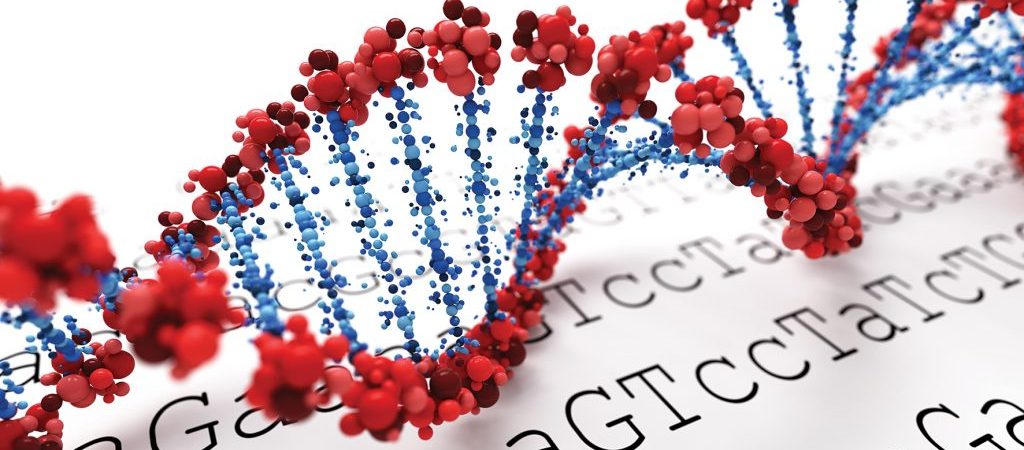
A book is thus a lot like an organism. Every species has a genome, full of genetic information. By information, we mean the way DNA is arranged. DNA consists of a series of the alphabetic characters arranged in a very specific sequence so as to produce a meaningful outcome. This is what makes genetic information worthy of the name, analogous to human languages. The alphabetic language of DNA is not the twenty six character English alphabet, but rather the four possible nucleotide bases, known as ATCG. If these are arranged in highly specific ways, that DNA is used to produce amino acids. Amino acids, when chained together, make up polypeptides. When you have a series of these amino acid chains in a specific sequence, they fold into a stable protein, like an origami model that folds itself. Producing a stable protein is the biological equivalent to making sense.
Just like with words, sentences, and books, there are far more ways of arranging ATCG bases so that they don’t make sense, rather than do make sense. Only a tiny fraction of all the possible nucleotide sequences code for functional proteins — ones that fold up properly, rather than fall apart. The fraction of amino acid sequences that do make sense vs. those that don’t make sense is absolutely infinitesimal. According to the pioneering work of protein chemist Douglas Axe and philosopher of science Stephen Meyer, the ratio of sense vs. nonsense is just 1 in 1074 for an average-sized protein. But that’s not all. When you combine this improbability with the other improbabilities involved in the physical formation of proteins, the probability comes out to 10164 [ii] That’s the equivalent of:
0.000000000000000000000000000000000000000000000000000
0000000000000000000000000000000000000000000000000000000
0000000000000000000000000000000000000000000000000000000001%
…of all possible sequences being functional. [iii]
For comparison, there are about 1080 observable particles in the universe. This means that finding functional sequences of amino acids (i.e.: biological phrases that make sense), is trillions of times more difficult than wearing a blindfold, being catapulted into space, and trying to find a specific atom in the entire universe. It’s just not going to happen.
The genetic information needed to produce a single protein is just one level of complexity. It is perhaps at the level of the sentence in human language. Just as a single sentence does not make a book, a string of DNA that codes for a protein does not make a genome. Our genomes have multiple layers of complexity, far beyond the lonely protein. Different proteins, coded by gene complexes, have to work together like sentences do to make up a paragraph. These genetic paragraphs are then strung next to each other into chromosomes, which are something equivalent to genetic chapters. It is these chapters that then make our book of life. At every level of genetic complexity, from words all the way to chapters, there are far more ways to arrange things so that they don’t make sense, vs. the tiny fraction of ways of arranging things so that they do make sense. The stunning arrangement that we see in the genome is one of the enduring mysteries of origin of life studies.

Life Beyond the Genome
And yet, it is not the only mystery. The ultimate mystery is how life exists at all. The universe around us is cold and dark. When we look at the pebbles in our garden, or a glass of water, we do not see living beings. And yet, some combination of substances like these gave rise to living cells — ones that could sense, react, and reproduce. How did this happen? How was the chasm between life and death bridged? Does it require something living outside of the world, or beyond matter, to infuse life into matter? Or was life always there to begin with? Though deeply relevant, these are metaphysical questions that biochemistry cannot answer. What biochemistry can answer is questions about the physical nature of life. Whatever ‘life’ is in its essence, it must be housed in the physical shell of an organism’s molecules. Thus we will refer to the physical aspect of the origin of life as inseparable to the question of how life first arose on Earth. We can therefore engage with this question scientifically, and follow the biochemistry wherever it leads us.
The origin of DNA is part of the mystery of the origin of life, but there is a wider mystery. While DNA is essential for the first living organism to exist, it is not enough. Genes may code for proteins, but they do not make them. After all, a genome cannot read itself. Like a play-script that must be brought to life by actors, or a symphony that must be played by musicians, the genetic code is useless without something to turn alphabet into action. So what is that something? The answer is — other proteins and biological complexes.
Confusion now arises. Genes code for proteins; proteins decode genes. Circularity abounds. Which came first? The answer must be — neither. They must both arise at precisely the same time.
The enigma is solved thus: a genome does not exist by itself. It is impounded in a biological membrane, floating in a chemical ocean of proteins and energy sources needed to make even the most basic cell tick. The whole cell has to be alive and functioning for any part of it to work. Proteins will only be produced, and reproduction will only occur if the lights are on in the cell at large. And that requires complexity far beyond the genome itself. It requires the assemblage of a 3D architecture to house the cell, a motorised tail that enables movement, a cellular hardware kit that reads the genome and produces proteins, and much else besides. The genome itself is ‘supercoiled’ by special proteins into a compact shape to save space, and when it needs to be read by the cell, it sticks a little bit of its DNA out at a time.
We see then that the complexity of the genome is just one half of the wonder of the origin of life. The other half is the rest of the cell. Whatever was the first cell, it had to have both a genome, and an apparatus to translate that genome into more living biology. Thus Life is no monologue with the genome appearing centre-stage; it is an ensemble piece with two lead characters — the genome and the wider cell. It is no Hamlet, but a Romeo and Juliet, a grand biochemical romance where our protagonists must either live together or die together.
Video — Animation on Cell Mechanics
The Illiteracy of Materialism
The Rules of the Game
Genome, and the Cell that gives the genome meaning. When exploring the origin of life, these are the two star-crossed lovers to keep in mind. Both have been investigated, with devastating effects for scientific materialism. Scientific materialism is the dominant scientific paradigm. It wants to explain everything in terms of natural processes that aren’t guided by a Higher Power. It is thus implicitly, and often explicitly, atheistic. It rejects from the outset that a non-material entity independent of our universe could be shaping and directing our universe towards specific ends. It therefore posits that all the incredible facts of life by which we are confronted can be suitably explained by mindless processes, be they random or law-like. Here random equates to rolling a dice and seeing what number you get, and law-like refers to the law of gravity that ensures dice always fall down and not up. In philosophical terms, when something is random it’s governed by chance. When it’s law-like, it’s governed by necessity, meaning that it has to be this way because of the way the universe is built. A mixture of chance and necessity, we are told, is responsible for all phenomena in the universe. Either it happened by accident, or it had to happen because of the universe’s boring laws. And more often than not, things happen because of a mixture of the two.
Whether this atheistic approach can explain the origin of life is now our focus. We will start by examining explanations from necessity, before examining those guided by chance. Could necessary, law-like processes explain the specific arrangement of DNA that we need to make proteins? Can the appearance of genetic code be accounted for by physical laws like gravity, electromagnetism and the like? Is DNA emergent from the basic laws of the universe?
Law & Order
One natural process already alluded to is the so-called ‘law’ of natural selection. Natural selection is not an active force, and therefore is not a law in the same way gravity is. It’s more of a description of how things tend to work out. However, given that it’s often thought of as an explanation for anything biology-related, it’s worth considering first.
Natural selection tells us that those biological traits which give an organism a survival advantage will be more likely to be passed on to the next generation. Given this, natural selection is completely irrelevant to the question of the origin of life. This is because the origin of life is concerned with how the first cell came into being. Natural selection can only work when that original cell already exists. Reproduction must already be in place before selection can work. Selection can’t tell us how reproductive cells came into being in the first place. As Richard Dawkins admits,
“The origin of life was the chemical event, or series of events, whereby the vital conditions for natural selection first came about… Once the vital ingredient – some kind of genetic molecule – is in place, true Darwinian natural selection can follow, and complex life emerges as the eventual consequence. But the spontaneous arising by chance of the first hereditary molecule strikes many as improbable.”[iv] [Emphasis added].
Natural selection is evidently a non-starter. But what about other laws? Could there be other laws of nature that make the appearance of the first cell a likely occurrence?
The answer is a resounding no. While law-like processes in physics can produce the regular and repeating complexity you see in crystal formation or fractal geometry, they do not produce the kind of irregular and asymmetrical functional genetic information found in DNA. Think about it like this — no novel could be produced by taking a simple string of letters, and repeating it over 300 pages. As pioneering origin-of-life philosopher Stephen Meyer notes, the information on DNA is a message, not a mantra. It is not simply (xyz)100, but a complex, irregular message which cannot be compressed into any equation shorter than the DNA sequence itself. Indeed, it is the very irregularities and asymmetries in DNA that are so necessary for life to function.
Given this, the nature of DNA and cellular proteins is beyond the reach of natural laws. Natural laws produce repetition wherever they are applied. When operated blindly, as they must in an atheistic worldview, they do not produce the kind of non-repetitive meaningful sequences we find in genomes. Of course, if operated by a conscious planner with a specific outcome in mind, natural laws can and do produce functional complexity. Indeed, this is the basis of all human ingenuity. But the atheist has barred himself from this option, and can only appeal to dead laws operated by a dead universe. As such, the cause is hopeless.
There is little else to say.
Video — Understanding Fractals & Emergent Complexity
Fractals show how complexity can arise with the same law being applied over and over again — but DNA isn’t like that. DNA is an irregular series which cannot be produced by a single equation repeating itself over and over. The phenotypic expression of genes however may well conform to fractal-like patterns in their topographical arrangement. Why and how this is, remains a mystery.
Feeling Lucky?
If natural laws acting repetitively can’t explain DNA, or cellular arrangement, then what about chance? Chance in this context refers simply to a higher-order interaction of repetitive natural laws. Whereas necessity refers to a small number of natural laws acting in a specific situation, ‘chance’ refers to situations where multiple natural laws act repetitively with multiple different objects. So while necessity dictates that raindrops fall down instead of up, we’ll talk about ‘chance’ interactions when the raindrop hits the ground with a million other raindrops, interacting with the soil, the air, and each other to produce a thousand different splashes. To be sure — it’s natural law in control all the way through. But when the interactions become so complex that we can’t track them anymore, we wonder whether some rare interaction could produce an incredible result.
Could life be the incredible result of such a process? To be so, the probability needed to produce biological life would have to be low enough for them to be achieved by luck. After all, mindless processes don’t care whether they produce a cell or not. They’re not trying to produce anything. They’ll just react and produce whatever they produce. If something is likely enough to be produced by chance, odds are it’ll be there by the end of the day. If it’s very unlikely to be produced by chance — you can bet it won’t be there by sunset. Appealing to chance therefore requires the odds for producing a cell to be low enough to have happened by the ungoverned interplay of natural laws during the 4.6 billion years available in Earth’s history.
The odds are distinctly unfavourable. Recall that the likelihood of finding a functional amino acid sequence out of all the possible amino acid sequences by chance was about 1 in 10164. However, even the simplest cell has hundreds of proteins that are essential for the cell as a whole to function. For instance, a conservative recent estimate for producing a minimally complex cell by undirected natural processes was ~1041,000 [v] This is almost identical to the level of improbability, (1040,000 ), calculated by famed atheist physicist Fred Hoyle many decades ago . If you’re not sure how big that number is, take the three lines of zeroes written earlier and repeat it 83 times — then you’ll get a sense of how improbable producing a minimally complex cell by chance is. It’s wildly improbable, to the point of being physically impossible. Indeed, Hoyle’s comment on the issue, made with characteristic British incredulity, still rings true today,
“The notion that not only the biopolymer but the operating program of a living cell could be arrived at by chance in a primordial organic soup here on the Earth is evidently nonsense of a high order.” [vi]
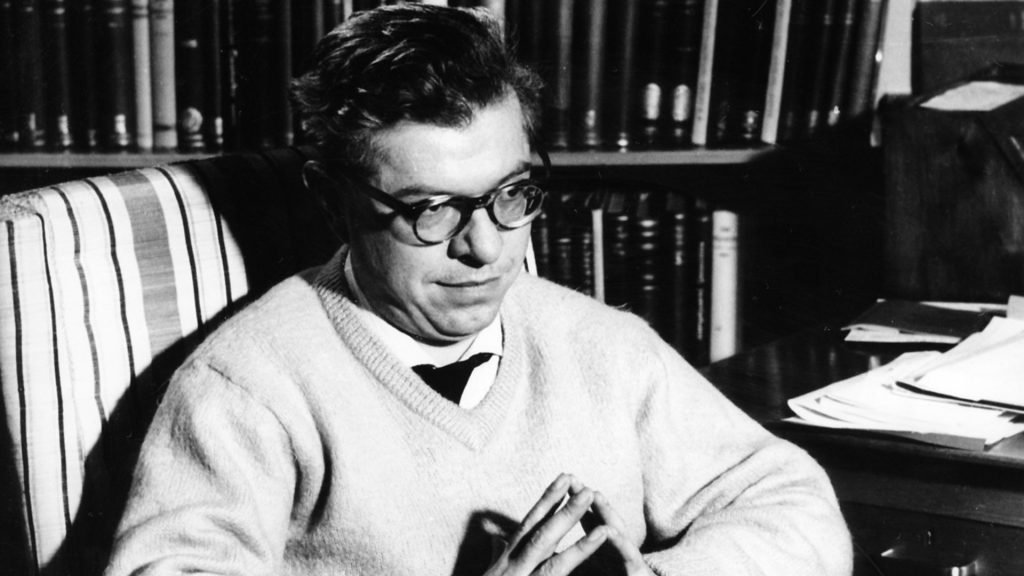
Such a minimally complex primordial cell is the best case scenario for those looking to explain how living systems first appeared. Nevertheless, even this is far out of the reach of materialist explanations. Evidently, neither law-like processes, nor chance-based mechanisms can do the job required of them. A mixture of the two only encompasses the faults of both. Thus the appearance of the first living cell is a complete mystery for atheist scientists. The very first link in the evolutionary chain, its basis and foundation, is nothing but an irksome enigma to our modern ‘intelligentsia’. It’s not that they just haven’t discovered the answer yet. It’s that there can be no answer when all you believe in is chance and necessity.
The Incoherence of the Materialists
Betting on Chance
This is a huge problem for the dominant materialist narrative. But there are some brave stalwarts of modern atheism who have said that chance is enough. According to them, you just have to increase the number of tries — by any means necessary.
The following example will make their logic clear: imagine that someone comes up to you and says that if you roll a 6 with a six-sided die on the first attempt, they’ll give you £50. What should you do? Just pick up a die and have a go? Maybe. But, our atheist friends would point out, a smarter solution would be to get six dice and roll all of them at the same time! That way, you’re more than likely to hit a 6 at least once. And then with a winking smile, you can collect your £50 — after all, you did get a 6 on the first throw!
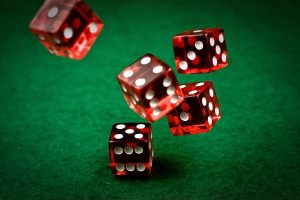
Trying to increase the number of tries like this is known as increasing your probabilistic resources. Here, increasing our probabilistic resources is increasing how many dice we’re rolling at once, and therefore, how many tries we can have in a set period of time. The principle applies to any number of situations too. If for instance an archer keeps missing his target, then increasing his probabilistic resources would be getting more arrows to keep trying.
Now that we understand the principle, we can return to the problem — how unbelievably unlikely it is to produce a single cell by chance. On a plain reading of the situation, there just isn’t anywhere near enough time in the Earth’s early history for chance to assemble all the chemical components you need to make a genome, let alone an entire cell. You just can’t throw the dice enough times. In fact, even the 13.8 billion years since the universe began isn’t time enough either. There have only been around 1022 seconds since the universe began. Even if you had billions of chemical reactions happening in an ideal prebiotic soup every second the universe has been around, you won’t be able to get anywhere close to the 1082 tries needed to make a single protein probable. If you want to make a whole cell probable, then you might as well pack up your bags — the mathematics is uncompromising.
Many Earths?
To circumvent this painful obstacle, the number of tries the universe has had must be increased. The first major recent attempt to increase the universe’s probabilistic resources came from Richard Dawkins. In his blockbuster book The God Delusion, he suggested that if there are more Earth-like planets in the universe, the odds come in the atheist’s favour:
Now, suppose the origin of life, the spontaneous arising of something equivalent to DNA, really was a quite staggeringly improbable event. Suppose it was so improbable as to occur on only one in a billion planets… And yet… even with such absurdly long odds, life will still have arisen on a billion planets – of which Earth, of course, is one.
This conclusion is so surprising, I’ll say it again. If the odds of life originating spontaneously on a planet were a billion to one against, nevertheless that stupefyingly improbable event would still happen on a billion planets.” [vii]
Dawkins has here taken the Earth as one giant die, and tried to find a billion other dice. With more dice to roll, with an increase in probabilistic resources, he believes that you could hit upon the origin of life during the brief time the universe has been around. And since there are likely to be more than a billion planets in the universe, it’s no surprise that we’re here!
Smart right? But there’s a snag. Dawkins has egregiously ignored the fact that the origin of life is astoundingly more improbable than one in a billion (109). It is around one in 1041,000. The gap is rather large. It’s so large in fact, that if every atom in the universe was a planet, with ~1080 atoms, then there would still be around ~1040,920 too few planets to make the odds good. That’s not a small number.
There’s a further problem with his argument, even assuming life was just a billion-to-one affair. In order for his solution to work, he would need the other billion planets in the universe to be near-identical to Earth, for otherwise the ‘billion to one on Earth’ improbability just wouldn’t apply to them. And if the other billion planets are so similar to Earth then you introduce a whole host of new improbabilities. Earth, after all, is a special planet, at exactly the right distance from the sun, with exactly the right kind of moon, in exactly the right kind of solar system, to permit life to exist in the first place. If we didn’t have Jupiter circling us like a guardian angel, we’d be bombarded with asteroids. If our Moon wasn’t exactly the size it is, in exactly its orbit, the rotation of the Earth would be too volatile to allow stable climatic periods. If we were slightly further or closer to the Sun, then our water would either freeze or evaporate, leaving our planet devoid of the liquid water you need to allow life to begin. Et cetera, et cetera… You just can’t simply just invoke a billion other rocks and think that solves the problem. You’d need other Earths, and other Earths are exceedingly unlikely. When it comes to reducing probabilities, they cost more than they’re worth.

Finally, even if the origin of life by blind chance was just a billion-to-one, and even if there are a billion other Earth-like planets out there, Dawkins’ solution is still fatally flawed. The flaw is that he has assumed that no other planet in the universe has any life on it. This he assumes because as an atheist he can’t possibly imagine that something so unlikely as the origin of life has happened more than once in the universe. But what if it has? Imagine if we found that another planet had life. Imagine if we found two, or three, or more did. The laws of physics and chemistry being constant in the universe, it would be just as improbable for life to arise on those planets as it would on this planet. If something incredibly unlikely happens twice, it’s more than twice as unlikely to have happened. (In fact, it’s the first improbability squared). So even if a billion planets is enough to explain something that is a billion-to-one, if another planet has life then we need an extra billion planets to explain this new life-harbouring planet. If there are two other planets that have life, then we need another billion, billion planets. Where do we stop?
Or more pressingly, where do we begin? Since scientists haven’t yet discovered other truly Earth-like planets, we don’t know how many others there are, if any. And even if we did find ‘other Earths’, we would have no idea if these other Earths had life on them. Hence, like the classic DC Comics storyline ‘Crisis on Infinite Earths’, this so-called solution is universally catastrophic. In trying to explain the origin of life on this planet, Dawkins has invoked planets which may or may not exist, which themselves may or may not have life, and all the while using a blatantly incorrect improbability level. Doing all this in just a few dozen words is surely the work of a prodigious mind.
Multiverse
Not to be outdone by Dawkins, another perplexed biologist by the name of Eugene Koonin thought he could go one better. He thought Dawkins was being too small-minded by only appealing to planets inside the universe. Koonin thought we should think more about planets outside the universe! Koonin wanted to increase the probabilistic resources of the universe by giving it brothers and sisters. He appealed to a speculative theory in physics known as the Multiverse. [viii]
The Multiverse theory suggests that there could be a huge number of universes like ours, with only subtle differences between them. These other universes would be completely isolated from one another, so we could never know if they truly existed. However, they would still be connected in some grand cosmic structure, like a million bubbles swarming in an infinite ocean of possibility.
In such a multiverse, Koonin hypothesised that the number of planets at our disposal would be gargantuan. As such, we would surely have more than enough probabilistic resources to account for the chance hypothesis? 1041,000 may be big, but some physicists would hold that the multiverse might have even more universes than this. As such, Koonin speculated, we might just be that lucky universe that had the lucky Earth we stand on today.
While it may again sound attractive, this theory suffers from the same problems that dogged Dawkins in his ill-fated attempt to solve the riddle of life. Firstly, it assumes the existence of innumerable other universes for which it has no direct evidence. Secondly, for these other universes to harbour life, they would have to be similar to ours. This is so because our universe is finely tuned to allow life to emerge. Even the slightest change in the laws of nature would render our universe sterile. Hence, for other universes in the multiverse to be considered in the game of chance at all, they would have to be very specific types of universes. But then we run into the problem of how likely it is for these other universes to also have finely tuned laws of physics. We would have to ask, did someone or something set up the multiverse in a specific way to produce life? What are the odds of that happening by chance? The improbabilities then multiply again, and within ten minutes a physicist would be convincing us that there is an omniverse where all the different multiverses exist!
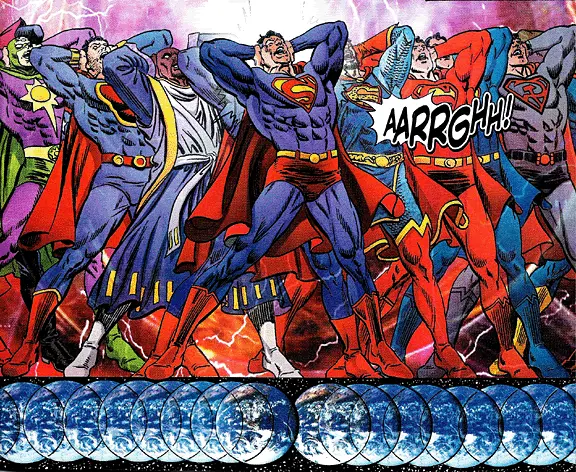
But let’s take all this as a given. Let’s assume, as Koonin does, that there is a multiverse, and it is packed full of universes that are finely tuned to permit life. Who is to say those other universes aren’t teeming with life? Koonin only assumes this to make his pointless exercise in probabilities work. As Dawkins assumed the other Earths were lifeless so as not to inflate improbabilities, Koonin has to assume that the other universes are sterile. Otherwise, if they are themselves teeming with all kinds of alien lifeforms, then he would have to again appeal to an omniverse to explain his exceptional multiverse.
And besides, where are all these universes coming from anyway? If more dice are in the game, then what, or who exactly is rolling them?
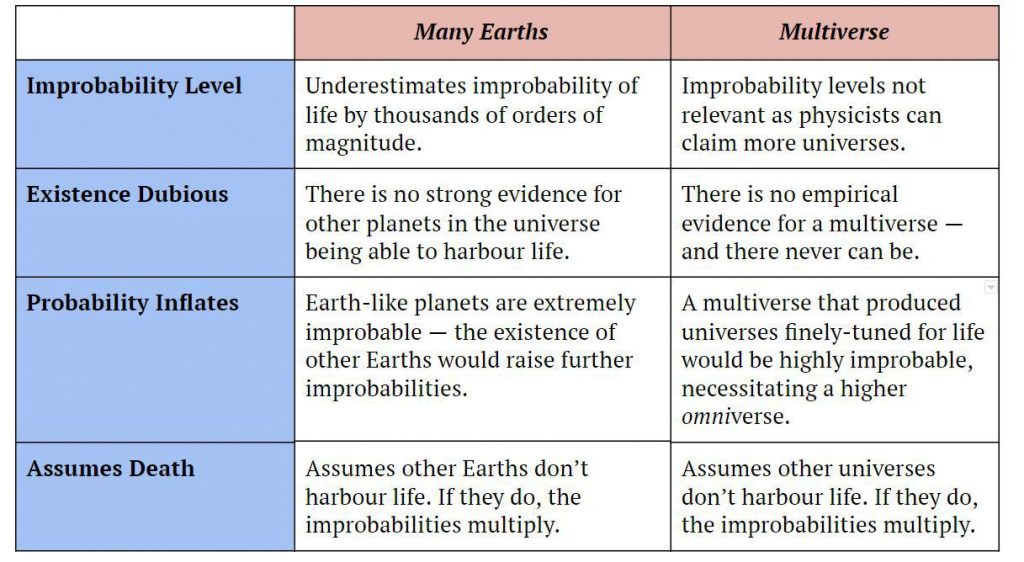
The Miracle of Life
Attempts to overcome the enormous improbabilities involved in the origin of life themselves raise more questions than they answer. They don’t affect the facts on the ground:
That life can exist is incredible.
That our universe permits life is astounding.
That our Earth could give birth to life is stunning.
That life was actually born is miraculous.
Miraculous: the overcoming of stupendous odds to produce a meaningful outcome. There is no other way of describing the origin of life on Earth. It shouldn’t have happened, and yet it did. It was not chance, nor necessity, but design. And yet, this was only the beginning of the story. It was like the ink being laid down to write the first letter of a story that is still being told. What happened next as the chapters unfold will amaze you; and the identity of the Author will not be left in any doubt.
In Part 2, we’ll examine how the process of natural selection is completely impotent to explain the evolution of life on Earth.
In Part 3, we’ll explore how random mutations can never bear the weight set upon them by evolutionary biologists.
In further parts we’ll explore the origin of language, discover why a Creator-God is the best explanation for these mysteries, and how we can reconcile the Design hypothesis with the pursuit of physical mechanism.
Watch More
Protein Folding Explained
Can Natural Laws Produce Genetic Information?
Read More
- Mirza Tahir Ahmad: Chapter 1, Chapter 2, Chapter 3 of those dealing with the origin of life, in the magnum opus Revelation, Rationality, Knowledge & Truth.
- Stephen Meyer: Signature in the Cell (book)
- David Berlinski: The Deniable Darwin (essay)
Acknowledgements

The first and greatest inspiration for this new series of articles was His Holiness Mirza Tahir Ahmad, may Allah be pleased with him, the Fourth Caliph of the Ahmadiyya Muslim Community. Throughout his life he showed immense spiritual insight into the scientific world. As early as the 1980’s he was exhorting the world to find scientific evidence for God in the origin of life, focusing particularly on the co-dependency of DNA & RNA.
In his book Revelation, Rationality, Knowledge & Truth, he outlined a stunning defence of theism in the face of scientific materialism, devoting multiple chapters to dismantling Richard Dawkin’s then-current The Blind Watchmaker. He also devoted great length to the problem of the origin of life and the origin of genetic complexity, citing the massive improbabilities involved as a clear indication of Divine Design. His writing in this area remains far beyond the writing of any of the scientists and philosophers discussed elsewhere in this article. If this is deemed to be implausible, then we again exhort the reader to sample his majestic writing above.
Next we thank our Ahmadi Muslim researcher colleagues for the stimulating environment they have provided for many years now, including especially Abdul Ghany Jahangeer Khan for his ever-present guidance, encouragement, and good humour!
Finally we owe much to the Intelligent Design community. They have turned the inferences of yesteryear into the hard empirical facts of today. By quantifying the genetic changes involved in the processes discussed, they have invaluably advanced this science. By making their research accessible and understandable to the lay-public, they have changed the public debate on this issue forever. Moreover, the lucidity, courage, and integrity of their writers and researchers must be commended with the highest honours.
References & Notes
[i] As per the OWL-2 Scrabble dictionary, which gives 1015 three-letter words. Since there are 26 letters in the English alphabet, the simply calculation is 100*(1015/(26^3)) = 6%
[ii] Axe, D, 2018. 2115. Journal of Molecular Biology, [Online]. 341, 1295-1315. Available at: https://www.ncbi.nlm.nih.gov/pubmed/15321723 [Accessed 4 January 2018]. For a simple explanation of Axe’s work, check out this video.
[iii] Meyer, S. (2010). Signature in the cell, Chapter 9. New York: HarperOne.
“Axe’s improved estimate of how rare functional proteins are within “sequence space” has now made it possible to calculate the probability that a 150-amino-acid compound assembled by random interactions in a prebiotic soup would be a functional protein. This calculation can be made by multiplying the three independent probabilities by one another: the probability of incorporating only peptide bonds (1 in 1045), the probability of incorporating only left-handed amino acids (1 in 1045), and the probability of achieving correct amino-acid sequencing (using Axe’s 1 in 1074 estimate). Making that calculation (multiplying the separate probabilities by adding their exponents: 1045 + 45 + 74 ) gives a dramatic answer. The odds of getting even one functional protein of modest length (150 amino acids) by chance from a prebiotic soup is no better than 1 chance in 10164.”
[iv] Dawkins, R. (2016). The God delusion. London: Black Swan, p.164.
[v] Meyer, S. (2010). Signature in the cell, Chapter 9. New York: HarperOne.
“Axe’s experimental findings suggest that Hoyle’s guesses were pretty good. If we assume that a minimally complex cell needs at least 250 proteins of, on average, 150 amino acids and that the probability of producing just one such protein is 1 in 10164 as calculated above, then the probability of producing all the necessary proteins needed to service a minimally complex cell is 1 in 10164 multiplied by itself 250 times, or 1 in 1041,000”
[vi] The Big Bang in Astronomy, New Scientist, Vol. 92, No. 1280 (November 19, 1981), p. 527
[vii] Dawkins, R. (2016). The God delusion. London: Black Swan, p.165.
[viii] Koonin, E. (2007). The cosmological model of eternal inflation and the transition from chance to biological evolution in the history of life. Biology Direct, 2(1), p.15.
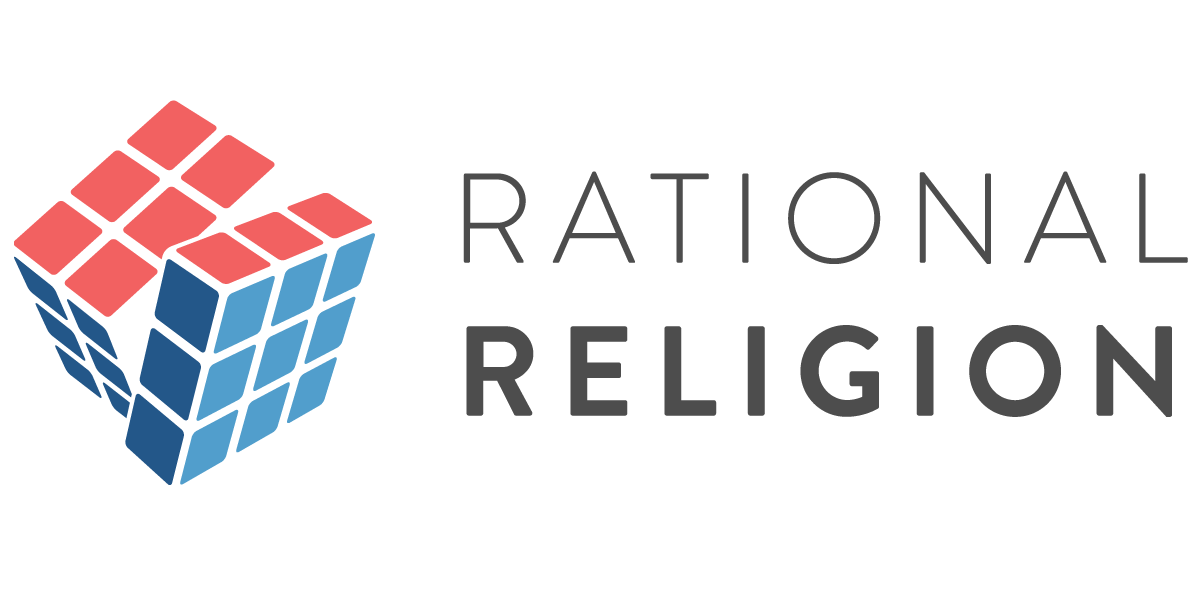

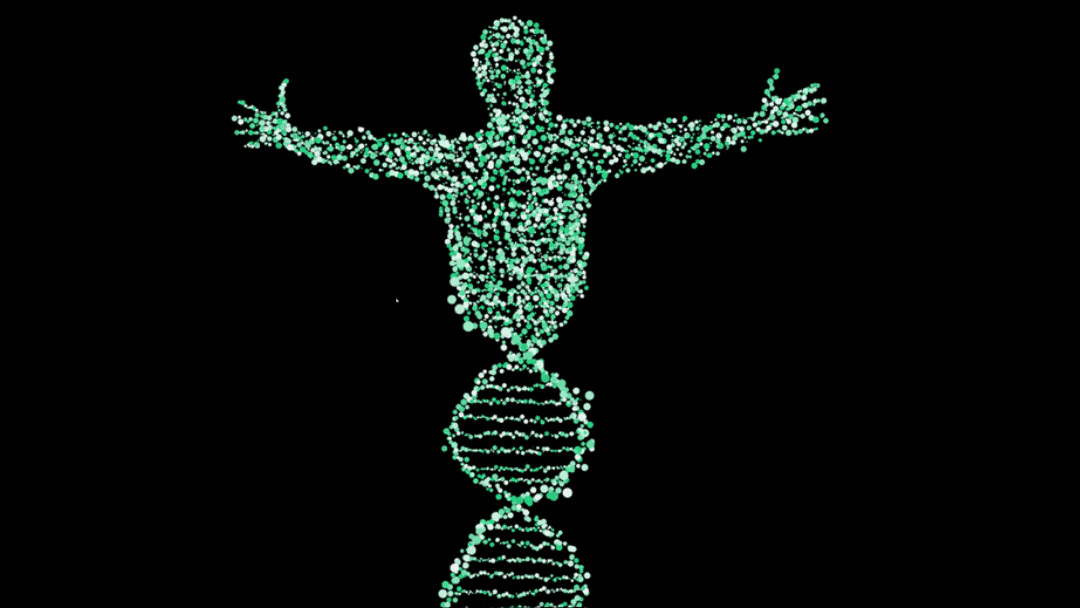



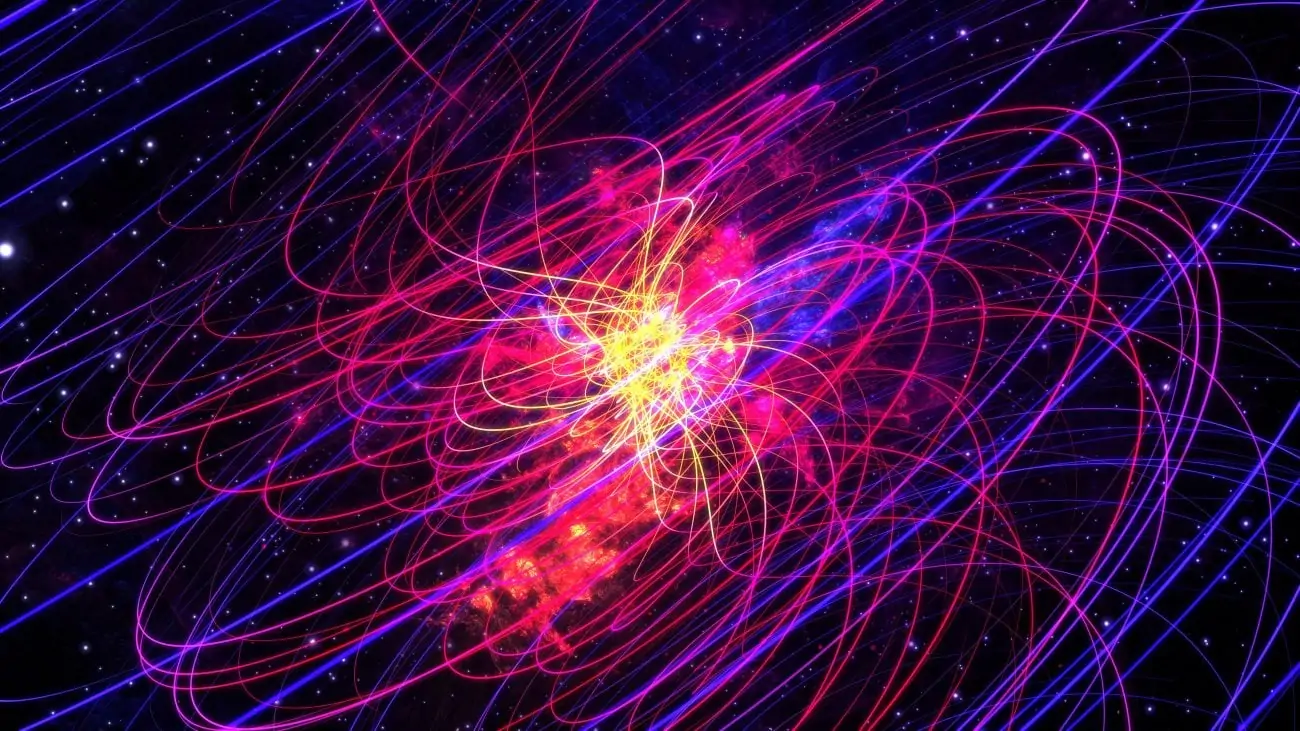




A very long, but extremely absorbing and enlightening read! Thank you. Will be waiting for the subsequent follow-up parts, Insha’Allah.
4.5